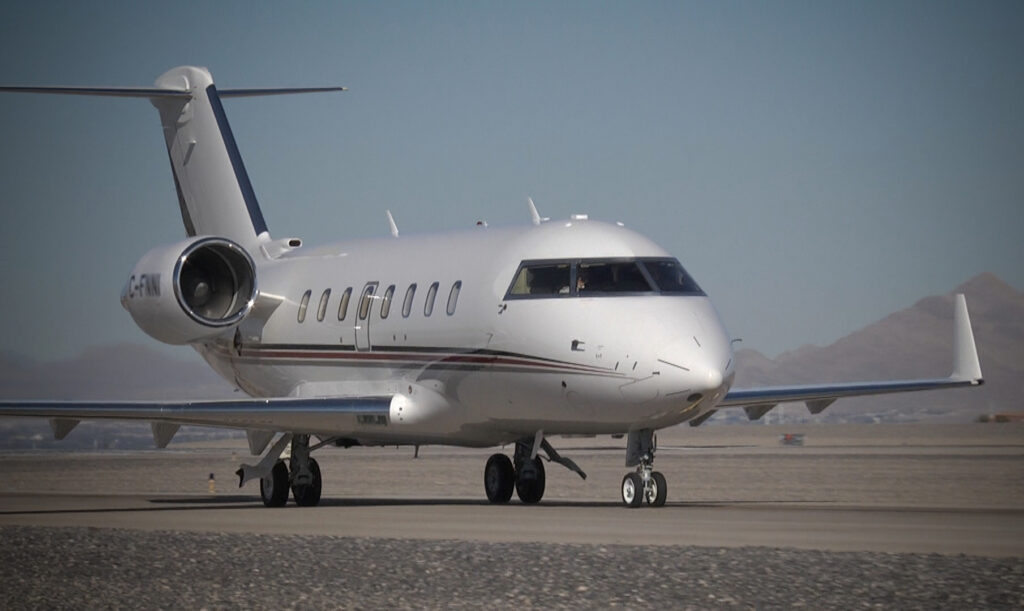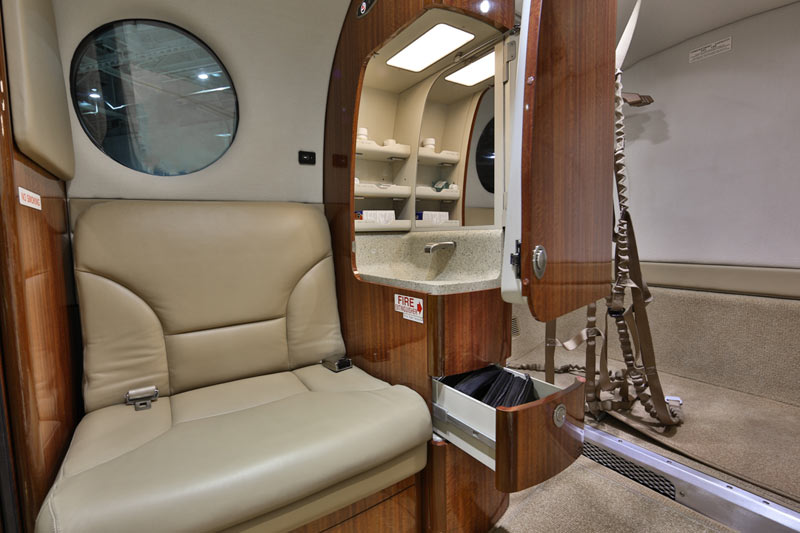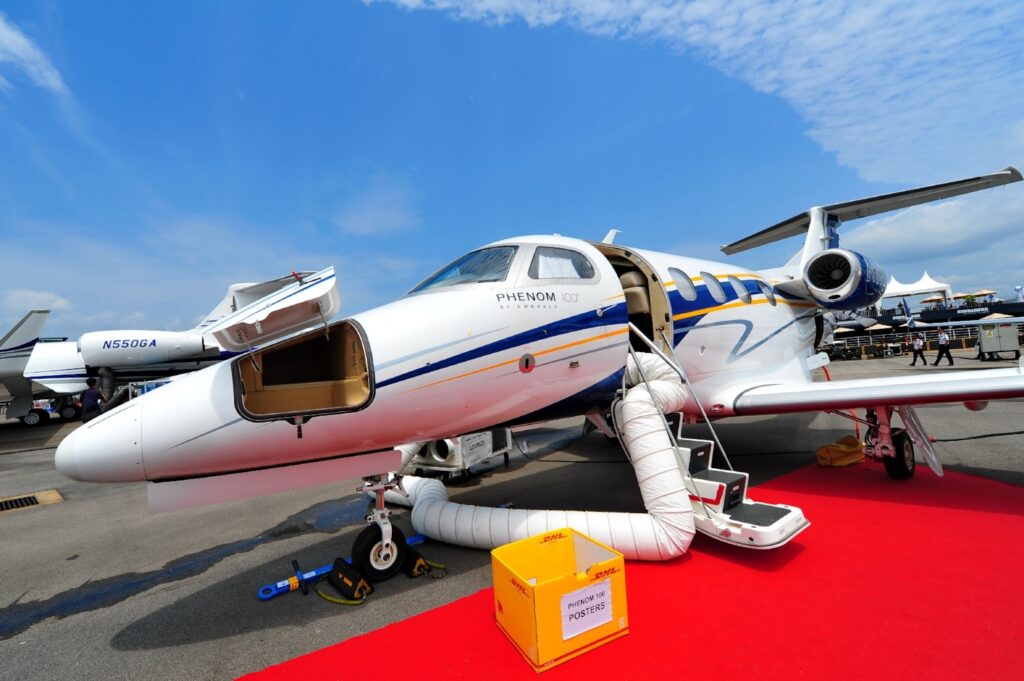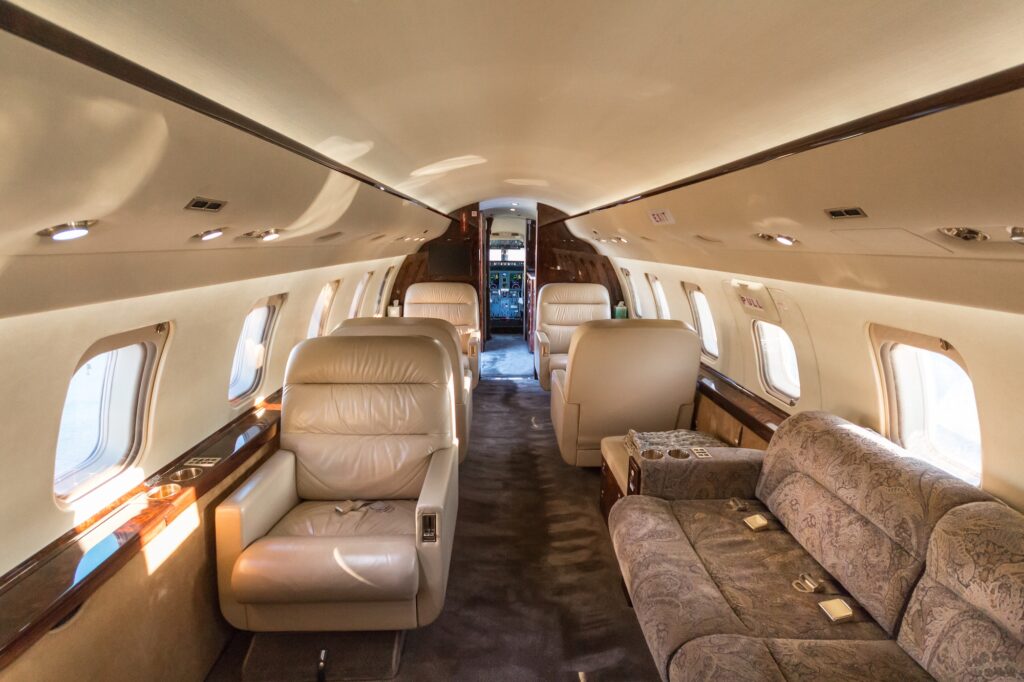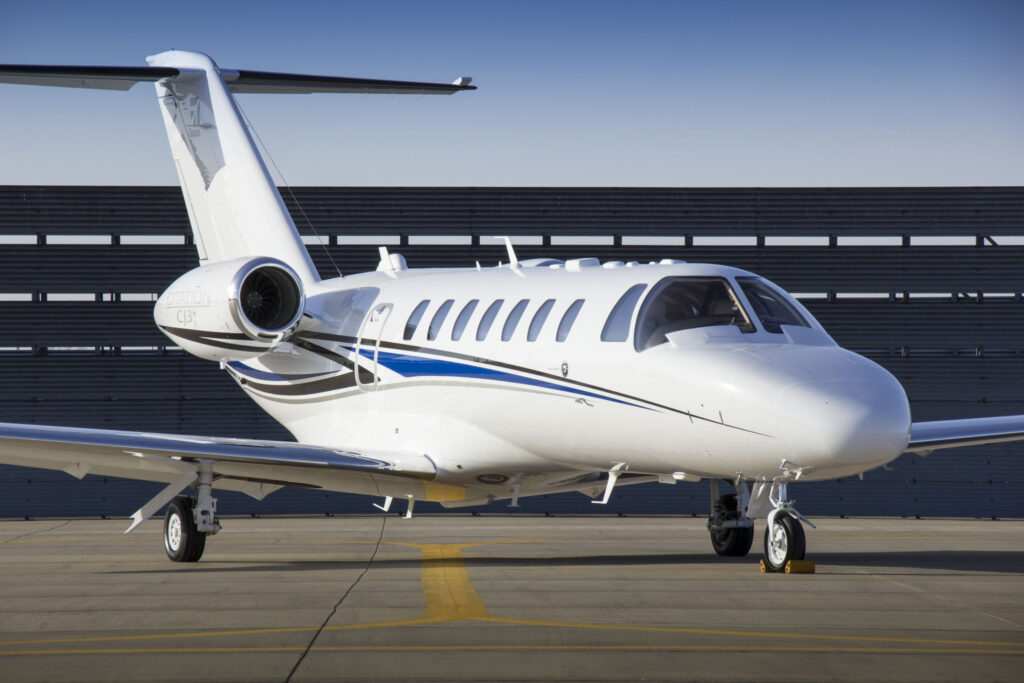Challenger 604
In 1996, Bombardier moved on from the Challenger 601 in favor of the Challenger 604, which comes equipped with more powerful engines, increased fuel capacity, higher takeoff and landing weights, structural improvements to its wing and tail, and an upgrade to Rockwell Collins’ ProLine 4 avionics system. Bombardier also created a militarized version of the 604, called the 604 MMA, which comes equipped with upgrades that allow it handle short, rough strips.
The Challenger 604, equipped with two GE CF34-3B engines, has a normal cruise speed of 447 knots, a range of 4,119 nautical miles, a climb rate of 4,345 feet per minute, and requires 5,621 feet of runway to takeoff and 2,928 to land.
Challenger 605
The Challenger 605, introduced to the market in 2006, is based on the 604, but comes equipped with upgraded Collins ProLine 21 avionics, electronic flight bag capability, structural improvements (including larger cabin windows), and a quieter passenger experience.
The Challenger 605, equipped with the same GE CF34-3B engines as its predecessor, has a normal cruise speed of 447 knots, a range of 4,119 nautical miles, a climb rate of 4,345 feet per minute, and requires 5,694 feet of runway to takeoff and 2,928 to land.
Challenger 650
Bombardier’s Challenger 650, introduced in 2015, has a completely redesigned cabin interior compared to the 605, a new Vision Flight Deck (enhancement of Collins’ ProLine 21 avionics system) and a five percent increase in takeoff thrust. Its cabin improvements include larger seats, bigger monitors, and a more technologically advanced cabin management system.
The Challenger 650 also comes equipped with two GE CF34-3B engines, and a has a normal cruise speed of 447 knots, a range of 4,119 nautical miles, a climb rate of 4,345 feet per minute. It requires 5,520 feet of runway to takeoff and 3,000 to land.
[ulp id=’ksrvpykbSKmvluGu’]

